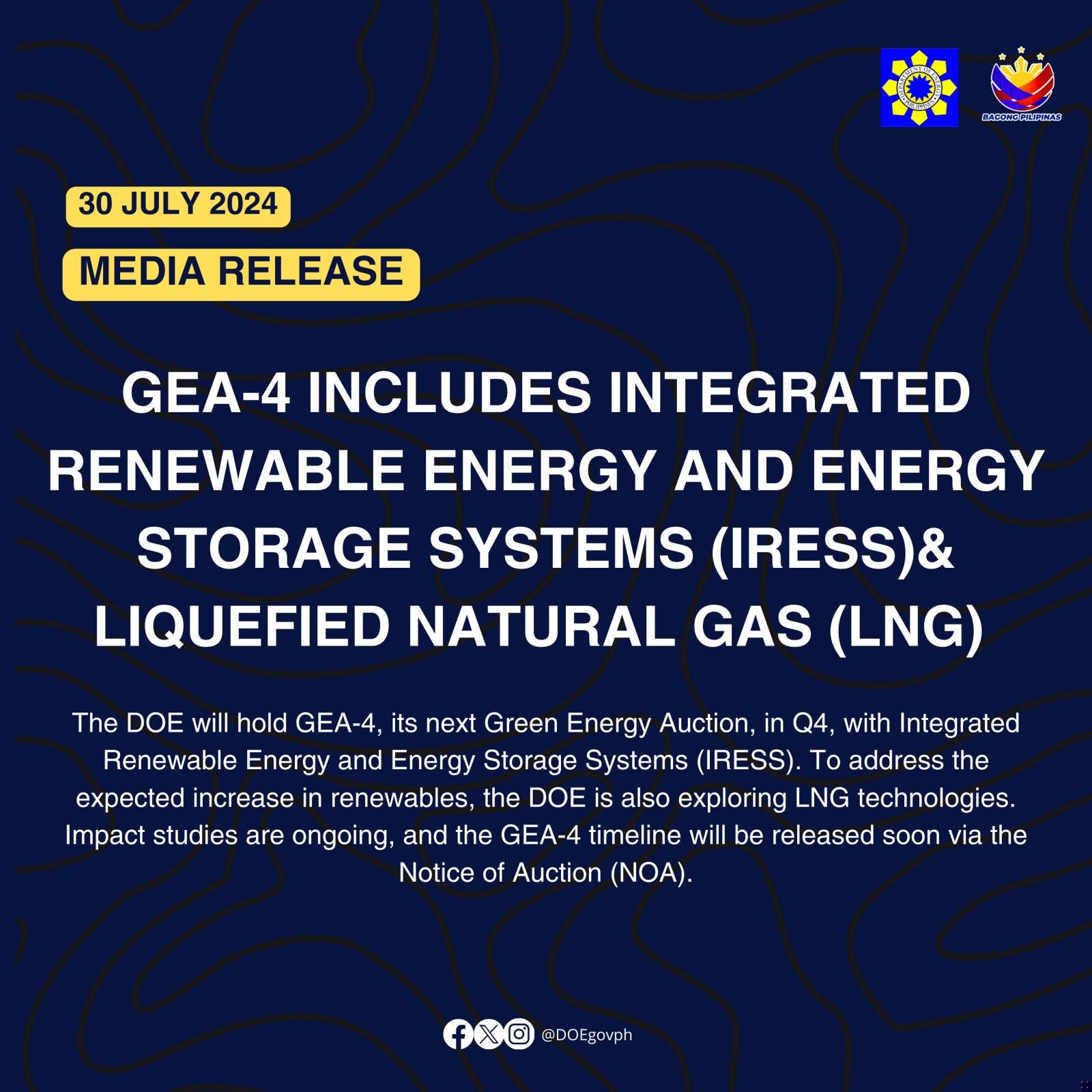The Department of Energy (DOE) will conduct another round of Green Energy Auction (GEA) in the 4th quarter of this year. Dubbed as the GEA-4, the auction is designed to cover Integrated Renewable Energy and Energy Storage System (IRESS).
IRESS is a comprehensive energy solution that combines renewable energy technology with energy storage systems (ESS). It involves the integration of renewable energy sources with energy storage technologies like batteries, flywheel or pumped storage hydropower systems. This integration allows renewable energy plants to optimize their operations by storing excess energy generated during peak production periods and utilizing it when needed, thereby reducing the required capacity from the grid. By combining renewable energy (RE) and energy storage, IRESS enhances the stability and reliability of the energy system, enabling a more consistent and efficient supply of power.
Currently, the DOE, in collaboration with development partners, is studying the design and economic viability of IRESS, according to Energy Undersecretary Rowena Cristina Guevara.
Additionally, with the anticipated high entry of renewable energy (RE) into the grid resulting from the GEA, the DOE is considering liquefied natural gas (LNG) technologies for the upcoming GEA-4. A series of studies and simulations on several impacts, such as price, dispatch, contracts, energy and capacity, will be conducted by the DOE.
In the coming months, the DOE shall release the indicative timeline of the GEA-4 activities through the issuance of the Notice of Auction (NOA).
In the last two years, the DOE has conducted two rounds of auction which generated a total of 5,306 MW RE capacities committed to deliver power in 2024 to 2026. Additional capacities will be auctioned for the 3rd Auction Round within the 3rd quarter this year. The GEA-3 specifically caters to non-FIT eligible RE facilities, i.e., geothermal, impounding and pumped-storage, as well as run-of-river (ROR) hydro which is a FIT eligible technology.
These developments, along with the outcomes of the auctions, demonstrate that the GEA program can provide a mechanism in promoting the increased use of RE resources, contributing to the ultimate goal of achieving energy security and reliability. ###

